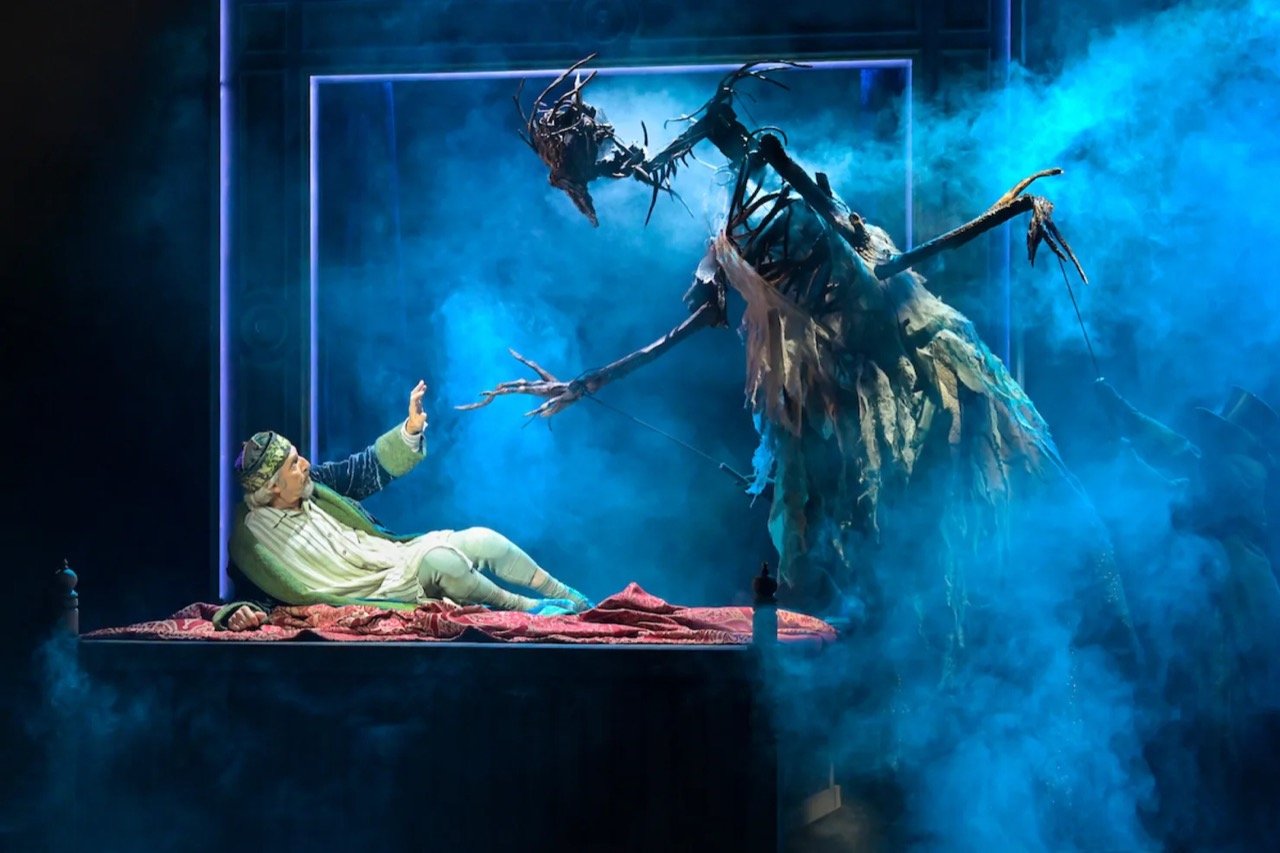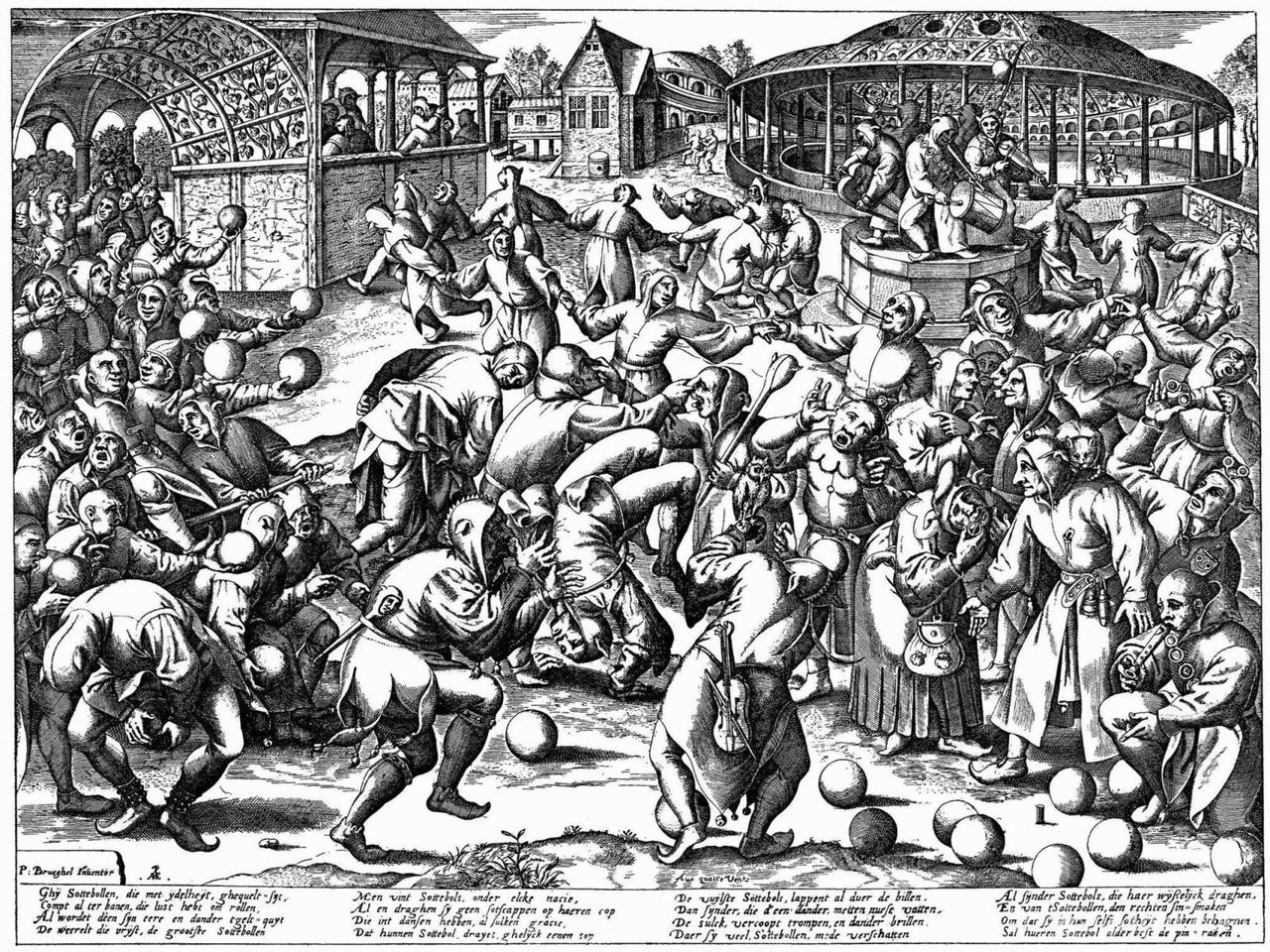Tornados and Misers and Fools, Oh My!!
Bienvenue and welcome back to Musée Musings, your idiosyncratic guide to Paris and art. This week, fools, again. But first, another alert and a little something Christmasy.
I had already sent last week’s post to the webmaster (mistress), when I was awakened at 5:51 on Saturday morning with a screeching noise emanating from my cell phone. It was the same screeching noise that I had received 9 days earlier. No, not another tsunami alert. This time it was a tornado alert. (Fig 1) Are you kidding? A tornado alert? In San Francisco? I understand and accept the tsunami alert. It’s the risk you take when you live so close to an ocean. But tornados? They should stay where they belong, in Kansas with Dorothy and Toto. I have always, a little smugly, I admit, told people who ask how I can live in an earthquake zone, that the possibility of an earthquake seems a lot more existential and a lot less certain than the annual occurrences that are hurricanes and tornados. And now this!
Figure 1. The Tornado Alert which appeared on my cell phone accompanied by a screeching noise at 5:51 a.m. 12/14/24
Although we were advised to seek shelter in a basement, San Francisco has street level garages and garden apartments, not subterranean basements. So we stayed well away from the windows as the wind howled and the rain fell horizontally in sheets. Then it was over. Except for all the downed trees and branches on the streets and in Golden Gate Park. (Fig 2) I’m sure that some of the trees whose branches fell or whose trunks were compromised have been in the park for a very long time. If nature hath no fury like a woman scorned, you guys better stay on the straight and narrow …..
Figure 2. A little taste of the tornado’s destructive power
I mentioned a couple weeks ago that for a very long time Christmas in my family meant (culturally) the big three - San Francisco Symphony for Handel’s Messiah, San Francisco Ballet for The Nutcracker and American Conservatory Theater for Christmas Carol. Except for a hiccup during the pandemic, Handel’s Messiah at Davies Symphony Hall remains a mainstay. We enjoyed the Nutcracker for a long time, especially the stage set which was a Victorian-era Painted Lady. Eventually though, Smuin Ballet, with its quirky, irreverent, even naughty renditions of ballet and contemporary dances to taped Christmas music replaced the SF Ballet on our roster.
But we stopped going to American Conservatory Theater’s Christmas Carol awhile ago. I guess because it was the same production the company had been staging since 1975. The only change I believe, from early in the 21st century, was non-traditional casting, of which the Cratchit family was the most obvious example - something like a Caucasian father, an Asian mother, and a mixed passel of kids. A precursor to Lin Manuel Miranda’s casting for Hamilton.
Then this year, I saw an advertisement for an all new production of Christmas Carol. Called ‘A Whynot Christmas Carol,’ (Fig 3) it’s a play within a play. The amateur drama company of the small town of Whynot casts, stages and then holds technical previews of its production of Christmas Carol. The cast floats between their roles in Christmas Carol and their roles in the play we’re watching. It’s very meta, very self aware, with lots of double entendres and knowing asides. In both the play and ‘The Play,’ questions of kindness and concerns for ones fellow wo/man/they take center stage. There’s a lot of political correctness, too, which gets on the nerves of the more senior cast members in a very meta way. For example, the little girl who plays Tiny Tim doesn’t want him to be crippled because it’s disrespectful to people who are. With sighs and shakes of the head, the cast agrees. So, in this staging, Tiny Tim suffers from malnutrition. Then, along with traditional non-traditional race mixing, this production has gender mixing, too. For example, Scrooge’s nephew Frederick is Frederica and her ‘spouse’ is another woman. With so much else going on, I didn’t even notice the races of Bob Cratchit’s children.
Figure 3. A Whynot Christ Carol, American Conservatory Theater, S.F.
One guy walks around wearing a yarmulka. At Frederica’s holiday dinner, he is introduced as a rabbi. Elements of Shylock are here, too. It’s something I’ve never seen before in Christmas Carol, with cast members wondering if Ebenezer is Jewish.
At one point, our vantage point changes and we are backstage, behind the actors playing to an audience in front of them, unseen to us, the real audience.
The Ghosts of Christmas Past and Christmas Future are puppets made of branches, twigs and leaves. They are beautiful extensions of the very visible people who manipulate them. (Figs 4, 5) San Franciscans are not always avant garde, they can be very traditional, too. So I hope this play survives. Because the next time I see it, I want to be prepared. I’ll reread Dickens' classic so that the ‘ur’ (original) version is fresh in my mind.
Figure 4. Whynot players rehearsing (actor playing Scrooge standing, left; girl playing Tiny Tim seated center)
Figure 5. Scrooge and Christmas Spirit puppet, Whynot Christman, A.C.T., SF
Okay, back to The Fool. (Fig 6) This week, it’s out of scriptures and into the royal courts of Europe. From the biblical and symbolic to the political and social. By the 14th century, the court jester had become an “institutionalized antithesis of royal wisdom.” If the past was anything like the present, not much separated the king from his fool. Well, maybe their outfits. The fool wore a striped costume and a cap with bells. And he carried a mock scepter. (Fig 7) I guess even their costumes weren’t that different!
Figure 6. Fool from a deck of Tarot Cards, Italian, 1450
Figure 7. A Jester, Marx Reinchlick (Tyrol) 1519-20
Interestingly, the idea of a king having a fool at court started with King Solomon. The same king who decided which woman was the mother of the (living) baby they both claimed as their own by offering to cut the baby in half and give 1/2 to each. He reasoned (wisely) that the woman who refused was the real mother. (Fig 8)
Figure 8. The Wisdom of King Solomon
A two-part book about King Solomon circulated throughout Europe from the 13th through the 16th century. In this tale, wise King Solomon isn’t quite so wise. The first part of the book is a dialogue between the king and his jester, Marcolf. Solomon stays solemn, Marcolf remains rude. In the second part of the book, “Marcolf tricks Solomon time and again.” (Fig 9)
Figure 9. King Solomon and Marcolf take a journey
After reading about King Solomon and his fool, European kings thought it would be cool to find fools for their own courts. As early as the 14th century, the court fool, the antithesis of the wise king, became an institution. He offered comic relief for the king and he could say in jest what a monarch's subjects wanted but were afraid to say.
The names of some of these fools have come down to us through their portraits. There was Triboulet in France, Will Somers in England and Elisabet at the court of Queen Anne of Hungary. (Figs 10, 11). She must have been witty and maybe even wise. Although very little is known about her, it speaks volumes since it upends most modern notions of the roles women were permitted to play at royal courts.
Figure 10. Will Somers, King Henri VIII’s Court Jester
Figure 11. Elisabet, Queen Anne of Hungary’s Court Jester, 16th century
The opposite of witty court jesters are the royals who actually suffered from mental illness. We know that Charles VI (1368-1422) of France, during whose reign the French lost to the English at the Battle of Agincourt, had periodic psychotic episodes. We know too, that Joanna of Castile (Fig 12), (1479-1555) was declared mad by her father, Ferdinand I of Aragon and her son, the future Charles V. We are told that she was so distraught by the early death of her husband (1506) (with whom she had 6 children in 9 years) that she went crazy. I’m not convinced. Seems more likely that Joanne was perceived by her father and son as being too powerful. So, they accused her of mental instability and confined her in one of the royal palaces until her death in 1555. Preferable to being called a witch and burned at the stake as other powerful women were throughout Europe and in America from the 14th to the 17th centuries.
Figure 12. Joanna of Castile, stripped of her power and confined to a palace by her father & son
Fools or fooling around escaped the confines of Court and could be found, for a little while at least, at Church. During the middle ages, the Christian liturgical calendar included specific moments when the Church's normal order was turned upside down. The Feast of Fools (Fig 13) was one such moment. Held every year between Christmas and Epiphany, it was an opportunity for young clerics to let off steam, to take the roles of their superiors and to mock ecclesiastical rituals.
Figure 13. Feast of Fools in Church, engraving by Pieter van der Heyden, 1559, by which time feast had been banned.
The Feast of Fools found expression in urban, secular settings too. With Carnival. It was and continues to be a time for people to put on costumes, wear masks, drink excessively and dance outrageously before the austerity of Lent sets in. (Fig 14) The fool was often in attendance. His association with social criticism continued to make him a vehicle for expressing subversive ideas. I’ve written about the Feast of Fools and Carnival here. https://www.museemusings.com/blog/ftes-amp-food?rq=Lent.
Figure 14. Carnival in a Village with Beggars Dancing, Martin van Cleeve, 17th c
Two books are cited for establishing the connection between fools and folly, the Ship of Fools (1494) by Sebastian Brant and In Praise of Folly (1511) by Erasmus. (Figs 15, 16) The former recounts an imaginary journey to the land of fools as a way of denouncing contemporary foibles. Filled with engravings, it was hugely popular when it was published. Erasmus’ book, written in Latin, is a satirical attack on all aspects of human life, including superstition and religious corruption. It was intended for a scholarly audience, but it is better known today because his critique was a forerunner of the Protestant denunciation of the decadence of the Catholic Church.
Figure 15. Ship of Fools, Sebastian Brant, 1494
Figure 16. In Praise of Folly (French translation) Erasmus, 1511
Cartoons and caricatures were created during the Reformation (Fig 17) (Protestant led) and the Counter Reformation (the Catholic Church’s response). The figure of the fool was used to denounce “the other’ in images created by artists working for both sides. The Protestants were more successful of course. Because it’s much easier to mock the status quo from the outside than to mock dissenters from inside. As with any situation, those in power have more to lose than those who seek to overthrow that power. And images of priests doing unseemly, foolish things are very effective. Especially with a public mostly illiterate and often anticlerical.
Figure 17. Protestant Propaganda caricature showing Monk used as a bagpipe by the Devil, ca 1530
Artists like Hieronymus Bosch and Peter Bruegel the Elder joined the conversation. A painting by Hieronymus Bosch, (Fig 18) incorrectly identified as the Ship of Fools, depicts a group of people on a ship, unaware of both their direction and their purpose. The painting's central motif is a tree with a single sphere, a reference to Original Sin. (Fig 19) The painting's meaning is simply that humanity is like a ship adrift in the sea of time. And everyone on board is a fool.
Figure 18. Ship of Fools, Hieronymus Bosch
Figure 19. Ship of Fools, detail. Disk represents Original Sin
In Pieter Bruegel the Elder’s painting of ‘The Fight between Carnival and Lent,’ there’s a lot going on. (Fig 20) But basically, the painting depicts the two sides of human nature, hedonistic and abstemious. On the left side is an inn, on the right, a church. Near the church are well-behaved children. Near the inn are raucous drunks. The fight between carnival and lent was a common theme in 16th century European art. Bruegel’s painting, is also a “satirical critique on the conflicts of the Reformation.” He worked for both the Protestant reformers and the Catholic anti-reformers. I’ve written about Bruegel here: https://www.museemusings.com/blog/-short-life-in-a-strange-world-?rq=bruegel
Figure 20. The Fight between Carnival and Lent, Pieter Bruegel the Elder
Depictions of fools dwindled in the 18th century with the dawn of the Enlightenment and the Age of Reason. But by the end of the18th century, the fool was back with Romanticism, the art movement that celebrated passion over reason and inspired artists like Johann Heinrich Füssli and Francesco Goya (Figs 21, 22) to create bizarre and sometimes terrifying works of art. At the same time, real madmen and women were being depicted by artists like Théodore Géricault who painted the patients in a Parisian hospital for the mentally ill. (Fig 23)
Figure 21. The Nightmare, Henrich Füssli
Figure 22. The Sleep of Reason produces Monsters, Francesco Goya
Figure 23. Madwoman suffering from Envy, Théodore Géricault
Not only artists but authors, too began incorporating madness and fools. Victor Hugo revived the figure of the fool in The Hunchback of Notre-Dame (1831). A year later his play The King Amuses Himself, featured Triboulet, the jester at the court of François I. (Fig 24) You may not know that play but you’re probably familiar with Verdi’s operatic adaptation of it 20 years later, with Rigoletto.
Figure 24. Triboulet, from The King Amuses Himself, Victor Hugo
There’s a lovely French film which came out in 1966 called King of Hearts. The film stars Alan Bates as a private in the English Army and the lovely Geneviève Bujold as one of the patients of a mental institution. (Fig 25) In more modern times, fools in films include Jack Nicholson in One Flew Over the Cuckoo’s Next, and Jack Nicholson in The Shining and Jack Nicholson as the Joker.( Figs 26, 27) I could go on, but I won’t. What’s on your menu for Wednesday dinner? With the Gregorian Calendar and the Lunar Solar Hebrew Calendar aligning this year - our menu includes both ham and latkes, of course! Happy Holidays & Gros bisous, Dr. B.
Figure 25. King of Hearts with Alan Bates and Geneviève Bujold
Figure 26. Jack Nicholson as Jack in The Shining
Figure 27. Jack Nicholson as the Joker in Batman
Thanks to everyone who took the time to send a comment, they are much, much appreciated.
New comments on Who’s the Fool?:
Thank u for fools paradise- such rich images and text. Now I know an 'old fool ' moved in next door with his much younger wife. She's out 24/7 and he's home house wifing! And being a grump in the neighborhood. Viv
Dr. B. I lived in SF for almost a year during DesertStorm. The city was vibrant and the shops were fabulous. Th early 90s and into the mid-90s were also a good visit; there was a bit more homeless and changes of stores. I am so glad I experienced that time and had dinner in Chinatown and shopped at Macys.. remembered as a child going there on an annual business trip with my family. We stayed on Union Square in a beautiful hotel nice memories all. Please keep us up on what you think is happening regarding Macys and surrounding businesses. I have not been back in several years. now. Thank you for this post! Dianne
Truly awed by your political commentary whose views I share during these most
troubling times. OK, fess up, you also have a Phd in Political Science ! Bill, Ohio



























